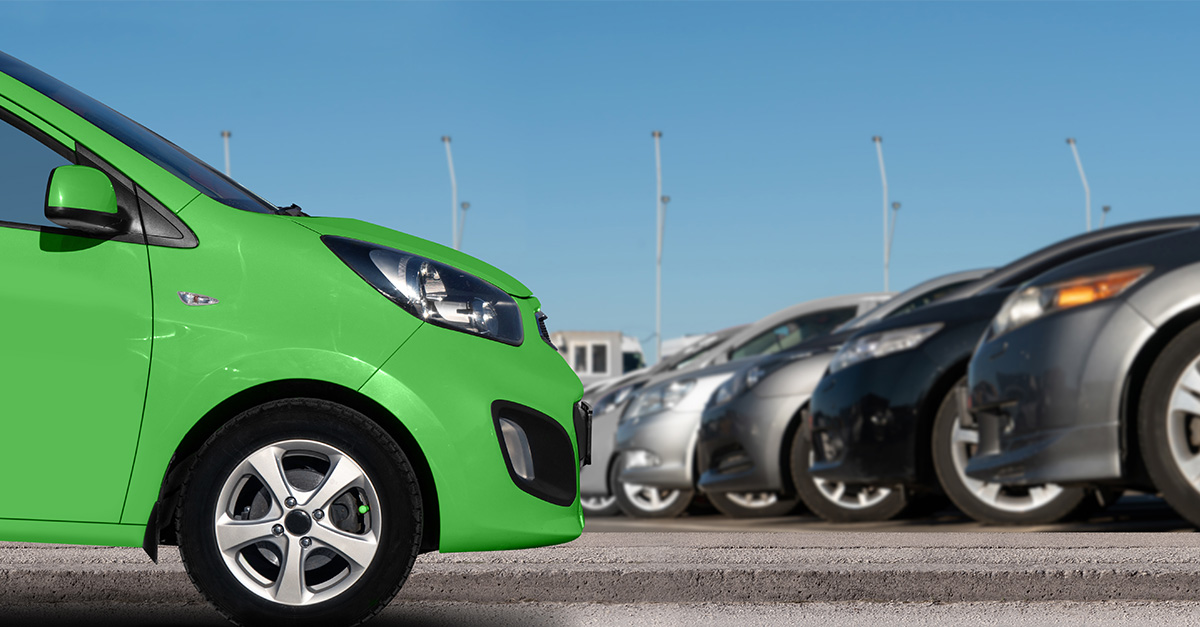


Get a free copy of Parental Rights & Education when you subscribe to our newsletter!

Green is the new Red, and both suffer from the same sin: making an idol out of the State.
Conservative activist David Horowitz once remarked that “inside every progressive is a totalitarian screaming to get out.”
They’ll never admit to it, of course, but just review the “solutions” they propose: Each one establishes a new program that expands control over the American public.
That’s what progressives mean by “progress” — the accumulation of state power.
This mindset is important to understand because as we flip through the darker pages of history, like China’s one-child policy or the Soviet gulags, it’s tempting to think that we are immune to such extremes in 2024.
However, that’s missing the gradual encroachment of Marxism that’s already in our midst.
The creeping communist impulses are subtler now, but the point is that they persist — and that should concern every person who cherishes the concept of limited government as a bulwark against political overreach.
Consider the electric vehicle (EV) market as a poignant example.
Outside the wealthy areas of California, which account for a quarter of all EV sales, Americans aren’t exactly clamoring for these cars. In fact, sales are underwhelming even as the federal government is throwing wads of taxpayer cash at the industry.
The Wall Street Journal reported that “electric cars and trucks are piling up on dealer lots, causing auto companies to reassess their investment plans.”
Many dealerships refuse to offer electric options because it’s a financial loser for them.
As it turns out, Americans still prefer their gas-guzzling pickup trucks.
The Ford F-series, for instance, defends its longstanding title as America’s top-selling automobile, with an impressive 750,000 units sold in 2023 — a 15 percent climb from the previous year.
So why haven’t electric vehicles caught on fire with consumers, aside from their batteries literally catching on fire?
Well, here’s the less-talked-about reality: EVs are priced at a premium and are replete with ownership headaches. They’re expensive right out of the gate, have a limited range, and come with higher insurance rates.
And let’s not forget, they’re hard on tires, don’t hold up in colder climates, and require pricey home charging stations.
These inflated costs linger, mind you, despite the lavish government subsidies that come with EV purchases.
Think about that — Uncle Sam is explicitly favoring EVs using a variety of political dictates and tax credits, and yet they remain costlier than their combustion-engine rivals.
That hardly seems like a viable business model.
It’s much easier for consumers to fill up on unleaded.
But central planners flout these economic signals and press on, spellbound by their own statist agenda.
This is the “conceit” that the great Scottish philosopher Adam Smith warned us about more than two centuries ago.
“The man of system,” he wrote in The Theory of Moral Sentiments,
“is apt to be very wise in his own conceit; and is often so enamored with the supposed beauty of his own ideal plan of government that he cannot suffer the smallest deviation from any part of it…He seems to imagine that he can arrange the different members of a great society with as much ease as the hand arranges the different pieces upon a chessboard.”
The problem, as Smith articulated, is that “in the great chessboard of the human society, every single piece has a principle of motion of its own, altogether different from that which the legislature might choose to impress upon it.”
The Soviet Union’s disastrous foray into the “ideal plan of government” should have served as a cautionary tale for future politicians.
Unfortunately, the U.S. is treading in a similar direction, advocating an interventionist approach to the economy that’s been repudiated historically.
Let’s rewind to 1921, when the USSR inaugurated the “State Planning Committee,” which was tasked with “managing” the nation’s resources — from “where factories would be built, what goods they would produce, and what prices would be charged.”
Contrast this model with a market economy, one where buyers and sellers, entrepreneurial spirit, and private investment guide the sale of goods and services.
In a command economy, such market dynamics are sidelined — often resulting in inefficiency, scarcity, and waste.
Like manufacturing a whopping 800 million pairs of shoes that end up sitting on shelves.
True story.
That’s how many shoes the Soviets produced each year, which was enough to outfit “every citizen with three new pairs.”
Nevertheless, there was a shoe shortage.
Why? It appears wearing the commie footwear was about as enjoyable as sprinting barefoot across a bed of nails.
Purportedly, the “quality, design, and fit were often so poor that many residents had to spend hours looking for a perfect pair, or buy imported shoes at vastly higher prices.”
One “factory worker” in 1979 lamented the “fruitless search across Moscow for suitable winter boots for herself and her child.”
The irritated woman told the Washington Post that she desired “something stylish and so does my child,” but couldn’t find anything appropriate.
“A Westerner could get them easily,” she observed.
That’s what happens when politicians, to borrow from Adam Smith, are wise in their own conceit — “chronic shortages of even the most basic goods,” including toilet paper, milk, and toothbrushes, and a surplus of stuff that nobody wants, like Bolshevik combat boots.
There was a reason the KGB would “advise” its people not “to look in the store windows” of “major western cities” when they traveled abroad — a peek at the capitalist bounty would make them have second thoughts about their own “workers’ paradise” at home.
After all, utopian visions must be propped up by propaganda.
And it’s precisely this propaganda that loops us back to the present-day push to electrify America’s automobiles even though most buyers are disinterested.
Actually, disinterest hardly captures the full scope of the apathy.
According to USA Today, “EV inventories” ballooned by 506 percent at the end of 2023 and are gathering dust on dealer lots, taking, on average, three weeks longer to sell.
Then there is the rental car giant Hertz finding out the hard way that consumer preferences are not engineered in the way liberals imagine. The company is “sell[ing] off a third of its electric fleet” and allocating those funds to restock its supply of conventional gas cars.
In addition to lackluster demand, CEO Stephen Scherr said that “collision and damage repairs on an EV can often run about twice that associated with a comparable combustion engine vehicle.”
Hertz’s electric escapade is shaping up to be a $245 million “oopsie” on their balance sheet.
It’s an expensive lesson to learn.
But at least some businesses are learning their lesson.
The same can’t be said of the current regime, which continues to treat voters — and car companies — as if they are simply pawns on a chessboard to be positioned for political ends.
Green is the new Red, and both suffer from the same sin: making an idol out of the State.
If you like this article and other content that helps you apply a biblical worldview to today’s politics and culture, consider making a donation here.

Notifications